Think about amazing dance moves in a new way. Breakdancing includes moves from martial arts, gymnastics, and even yoga. Today, breakdancers, called Bboys and Bgirls, push the limits of what the human body can do, almost like they’re defying gravity. Starting from underground dance scenes, get ready to see the top 25 most incredible breakdance moves!
Windmills
We start with the most recognizable move – the windmill. It was first inspired by a Kung fu move used to spring up from the floor without using hands. Now, it has evolved into a continuous motion where the dancer keeps spinning around their upper body. You can use your hands, forearms, elbows, or head to keep spinning. The variations are endless!
Headspins
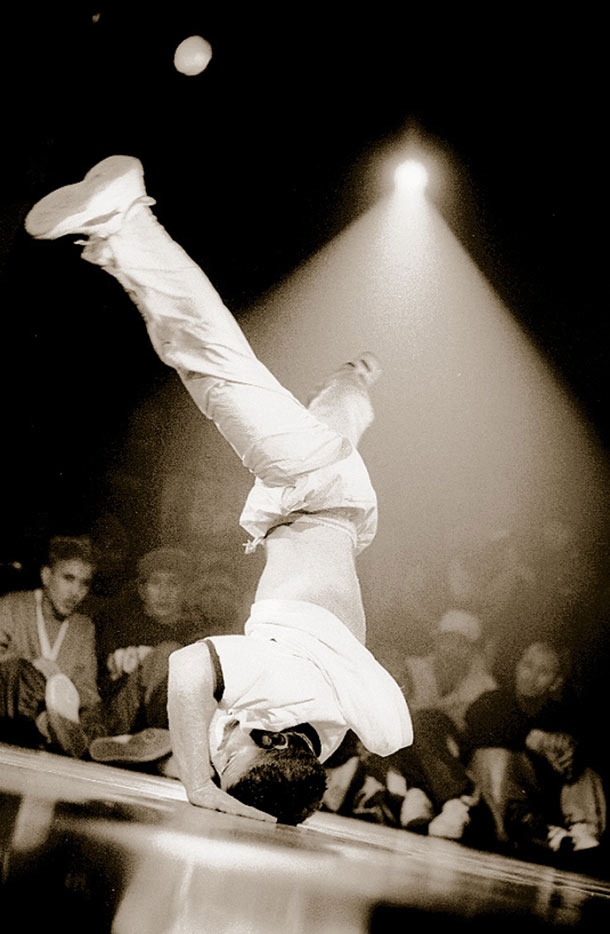
Warning: Do not try this move on concrete for obvious reasons. The headspin is one of the most iconic and unnatural moves in breakdancing. Although it comes from capoeira, Kid Freeze is credited with inventing the ‘continuous headspin.’ Today, bboys around the world have mastered this move. In fact, Bboy Aichi from Japan holds the Guinness World Record with 135 rotations in 1 minute.
What is capoeira?
Capoeira is a Brazilian martial art that combines elements of dance, acrobatics, music, and ritualistic movements. It originated in the 16th century during the time of slavery in Brazil when African slaves developed it as a means of self-defense and cultural expression. Capoeira is characterized by its fluid and rhythmic movements, often performed to music played on traditional Brazilian instruments like the berimbau, pandeiro, and atabaque.
One of the distinctive features of capoeira is the “ginga,” a fundamental movement that involves swaying and rocking back and forth to evade attacks and set up offensive moves. Capoeira is typically practiced in a roda, a circle formed by participants where two practitioners engage in a playful exchange of kicks, sweeps, and acrobatic maneuvers. The game (jogo) is not competitive in the traditional sense; instead, it’s more about demonstrating skill, agility, and control while respecting one’s partner.
Capoeira has evolved over the centuries and has become a symbol of Brazilian culture, incorporating elements of Afro-Brazilian heritage and folklore. It is practiced worldwide today, not only as a martial art but also as a form of fitness, cultural expression, and community engagement.
Jackhammers
You’ll find that many bboy moves don’t look like their names suggest, and the jackhammer is one of them. This move may seem impossible, but it’s all about balancing. It uses a technique called “stabbing,” where you support your entire body weight by placing your elbow on your stomach at a 90-degree angle. With the right setup and a little push from your legs, you can pull off the jackhammer.

Head Slide
Beginners, don’t try this move without proper training and supervision. The headslide is an unnatural move that needs a lot of neck strength and support. One key tip: make sure you have hair when attempting this move.
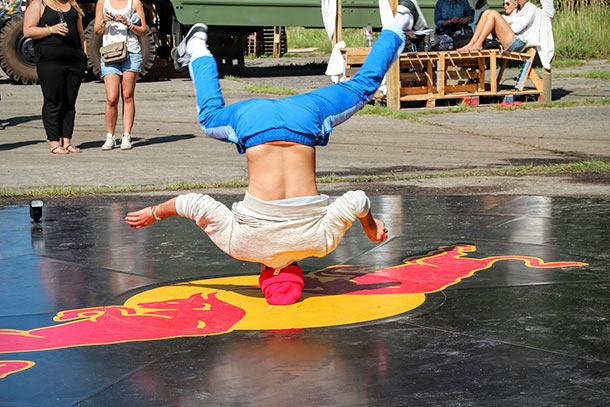
Baby Spins
The ‘baby’ move comes from the baby freeze, which is one of breakdancing’s basic freezes. You spin quickly in a circle while holding this freeze. It’s not considered a typical powermove by many bboys yet, but it’s definitely becoming popular.
A powermove, in the context of various dance styles like breakdancing (also known as breaking or b-boying/b-girling), refers to an advanced and dynamic move that requires strength, agility, and skill. Powermoves are often characterized by their acrobatic and visually impressive nature, involving rapid spinning, twisting, and intricate transitions performed on the floor.
In breakdancing, some common powermoves include:
- Windmill: A continuous rotating movement where the dancer spins horizontally on their back, supported by their arms and upper body while kicking their legs around in a circular motion.
- Flare: This involves rotating the legs in a circular motion while the body remains off the ground, supported by the hands.
- Airflare: An advanced move where the dancer rotates in the air, transitioning from hand to hand with the body in a horizontal position.
- Headspin: Spinning on the head while using the hands for balance and momentum.
- Swipe: A move where the dancer kicks their legs in a circular motion while rotating on their hands and shoulders.
Powermoves require not only physical strength but also mastery of balance, timing, and control. They are often a highlight in breaking battles and performances, showcasing the dancer’s athleticism and creativity within the dance form.
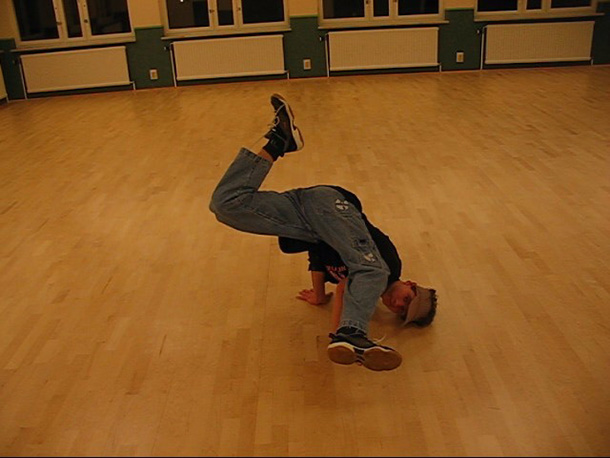
Hand Hops
This move comes from Capoeira, a traditional Brazilian martial art. Both hands push off the ground while the legs kick back and forth like scissors, creating a hopping motion. Surprisingly, you don’t need to be able to hold a one-hand handstand to do this. The key is the ‘push and catch’ of each hop. Once you master this, you can quickly redistribute your balance between each hop before pushing off again.
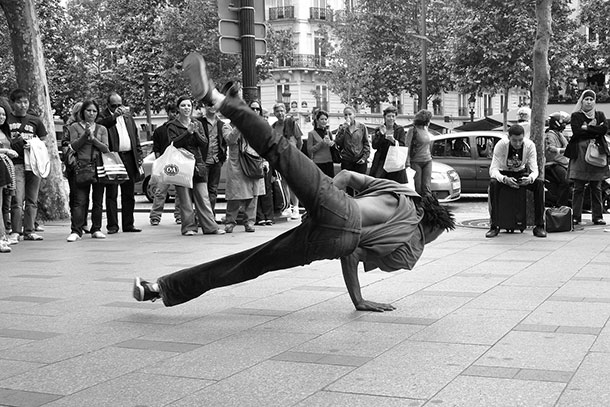
Flares
Borrowed from gymnastics, this move demands a lot of upper body strength, using your arms, back, and core. The legs swing in a circle around the body without touching the ground. The wider the legs are, the easier it is to maintain momentum and keep the hips high. So, a helpful tip: having a wide straddle split will make this move much easier.

Air Flares
Twenty years ago, performing this move made people think you could defy the laws of physics. Today, it’s a common power move. It started as a flare with the body nearly upside down and the hips very high. What sets this move apart is a small hop when transitioning from one hand to the other. There are many variations, from keeping the legs together to catching with the forearms. It’s such a beautiful move that even gymnasts have started including it in their floor routines.
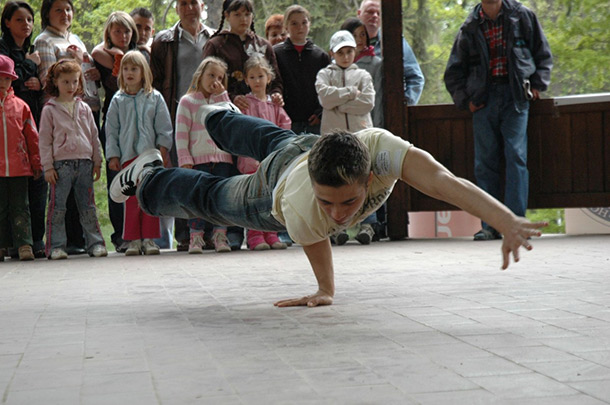
Buddha Spins
Buddha spins are a newer move in breakdancing. Once considered very challenging, they have become increasingly common among bboys. The move involves shifting your body weight from one hand to the other, with your hands controlling the rotation and your core staying tight the whole time.
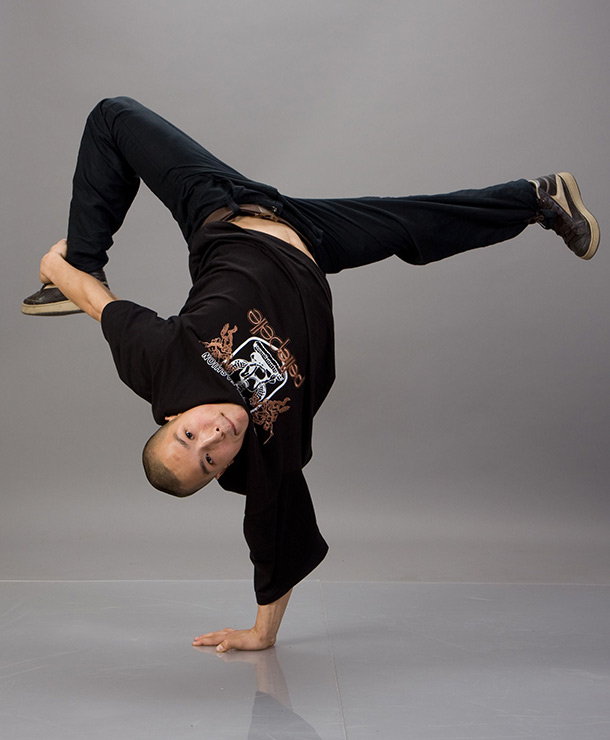
Deadman Float
Another move inspired by gymnastics, the deadman float relies more on momentum than raw strength. To perform it, you first need to master the UFO float, a similar move where the knees are bent and closer to the arms. However, the deadman is distinct because it requires significantly more core strength. Picture yourself in a planche position, but instead of holding still, you rotate your entire body in a circle. Sounds challenging, doesn’t it?
The UFO float, also known simply as the UFO, is a challenging and visually captivating breakdancing move that falls under the category of powermoves. It’s named “UFO” due to the circular motion and appearance resembling a spinning UFO or flying saucer.
Here’s a breakdown of how the UFO float is performed:
- Starting Position: Begin by getting into a stable handstand position on one hand. The other hand is used to support and balance your body while your legs are elevated off the ground.
- Circular Rotation: Once in the handstand position, initiate a circular motion by swinging your legs in a wide arc around your body. Your legs should remain extended and pointed.
- Maintaining Momentum: The key to the UFO float is maintaining continuous momentum and rotation. Use the hand that’s supporting your body to pivot and guide your movement, allowing your legs to circle around smoothly.
- Balance and Control: Throughout the movement, focus on balancing your body weight and controlling the speed of the rotation. This requires strength in your arms, shoulders, and core muscles.
- Execution: Ideally, the UFO float should be performed with a controlled and smooth motion, creating the illusion of floating or spinning in mid-air.
The UFO float is an advanced powermove that demands considerable strength, balance, and coordination. It’s often practiced and perfected by breakdancers as part of their repertoire of dynamic and impressive moves showcased during battles and performances. As with any challenging breakdancing move, mastering the UFO float requires dedication, practice, and a solid foundation in basic breakdancing techniques.

Elbow Hops
Rather than relying on the palm of the hand for support, someone had the idea to use the entire forearm instead. This provides slightly better balance, although it puts more strain on the shoulder. As shown earlier, different variations can make this move look really impressive.
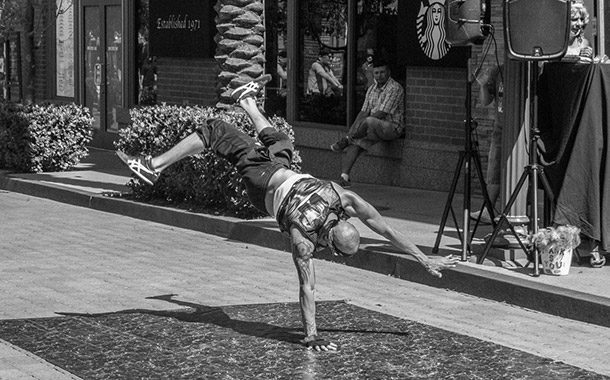
2000s
This move creates an illusion by having only one hand support all the weight instead of using both hands on the ground. While spinning on the palm of this supporting hand, the other hand is placed conveniently on top. To maintain momentum, two key things are needed: a strong setup initiated by swinging the legs and a stable handstand to stay upright. Bboys also tighten their core and gradually bring their legs together to generate even more momentum.

Boomerangs
This move is named after the ‘V’ shape formed by keeping the legs elevated. It requires strong quad muscles and significant hip flexibility to support your weight on your hands while leaning forward. Boomerangs are made dynamic by speed, so many bboys use other powermoves to transition into this one.
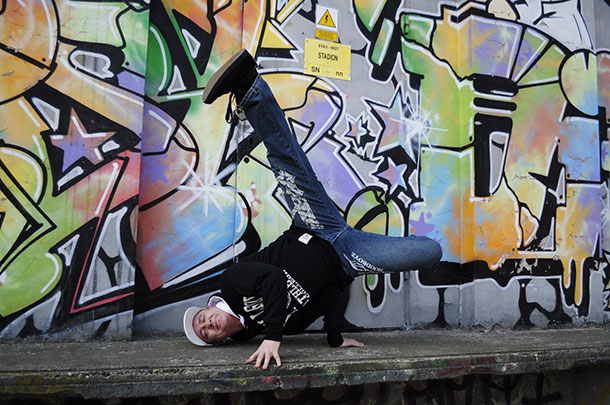
1990s
Ever imagined what a ballerina pirouette looks like upside-down? Well, look no further. The 1990 is a spinning one-handed handstand. Bboy Cico is renowned for effortlessly cranking out these spins. In fact, he holds the world record with 27 spins.
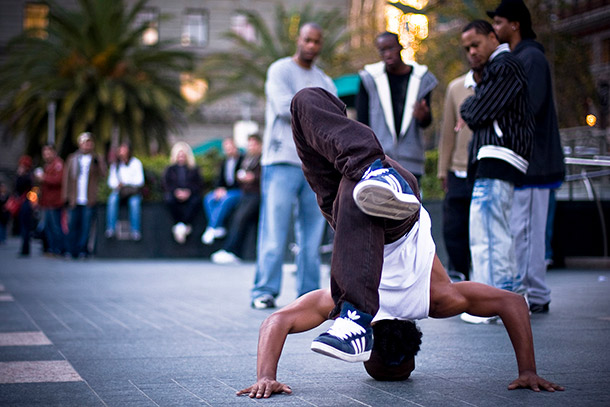
Air Chair Spins
The air chair is just as it sounds. Instead of sitting in a real chair, you support your body with one hand while mimicking a seated position. Transitioning into this move from a windmill with sufficient momentum creates the air chair spin. Some bboys prefer to wear a smooth cloth or glove on their palm to help maintain momentum.
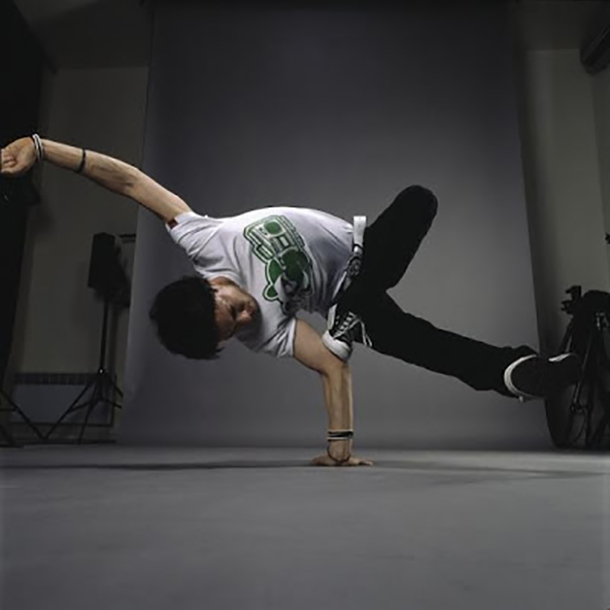
Floating Gremlin Spin
This move is incredible. I’ll call it the ‘floating gremlin’ for now (it’s a newer move). In regular Gremlin spins, bboys rotate a full 360 degrees on one hand without pausing. In this variation, the hips are raised higher than usual. Transitioning into this move requires strong flares.

Elbow Spins
To make a move more challenging, why not spin on your elbow instead of your hand? That’s the idea behind elbow spins. This concept is often seen in various variations of other powermoves. Elbow spins create an illusion because you’re not spinning on the very tip of the elbow but rather on the base of the forearm. Using a bit of soft padding helps maintain momentum and reduces friction pain.
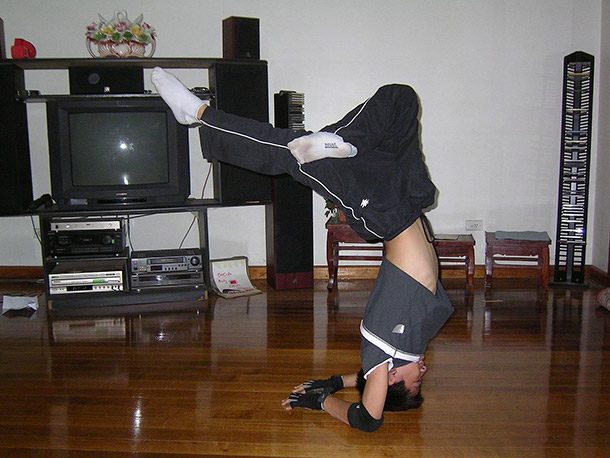
Elbow Flares
To increase difficulty, try transitioning to your elbows. With the hips positioned low in the front, the muscles in the lower back have to work harder to lift the hips high in the back. This results in leaning forward to the point where you resemble the ‘scorpion’ pose in yoga. The challenging aspects of this move come from the required flexibility and unusual strength needed to perform it.
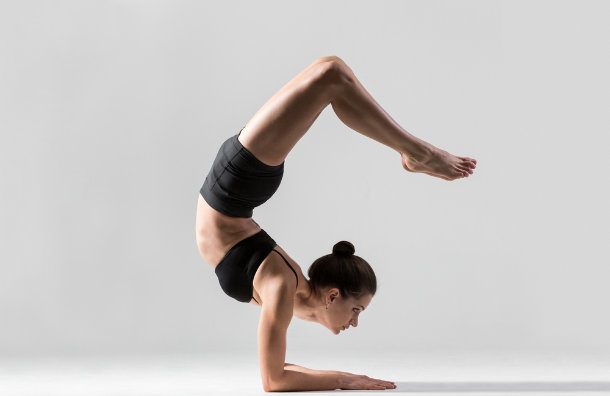
Elbow Tracks
You’ve conquered the air flare… What’s next? Mastering the air flare on your elbows! Interestingly, you don’t use your elbows to propel yourself in this move; it’s the entire forearm that absorbs the shock. This move looks incredibly awesome – enough said.
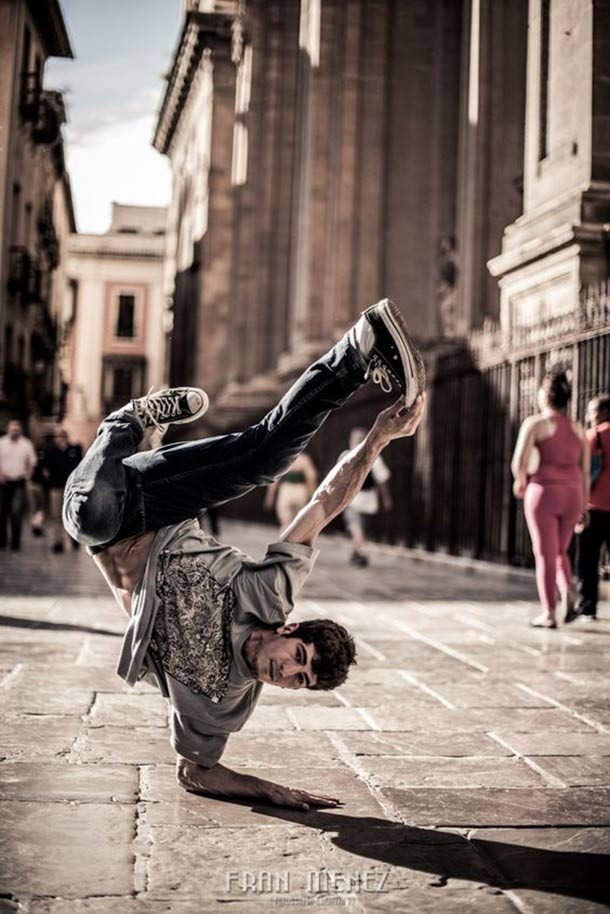
Taisuke Criticals
I know what you’re thinking. You might believe that if you were under 100 pounds with short legs, you could pull off this move effortlessly. Well, you might be onto something. Bboy Taisuke is recognized for his rapid movements and fluidity. He effortlessly launches his body into the air, seemingly without a proper wind-up. Don’t be surprised to learn that this GIF is in real time.
Elbow Chair Spins
It’s hard to imagine how this move was invented, but someone managed it. After extensive practice, Bboy Uzee Rock has perfected the art of spinning on the very tip of his elbow while keeping his body parallel to the ground.
1.5 Air Flares
If you’ve already mastered the air flare, what’s the next step? That’s right! Rotate your body an extra 180 degrees so you land on your shoulder instead of your hands. No big deal, right? Be sure to practice on a gym mat or soft ground because this move requires a lot of courage.

One-Arm Elbow Tracks
Wear elbow pads for this move because it can be painful. There are no shortcuts to making this move easier; you need to be fit and comfortable with linking power moves. At this stage of practice, it’s all about taking the plunge. Some bboys have even linked together 6 of these moves in a row.
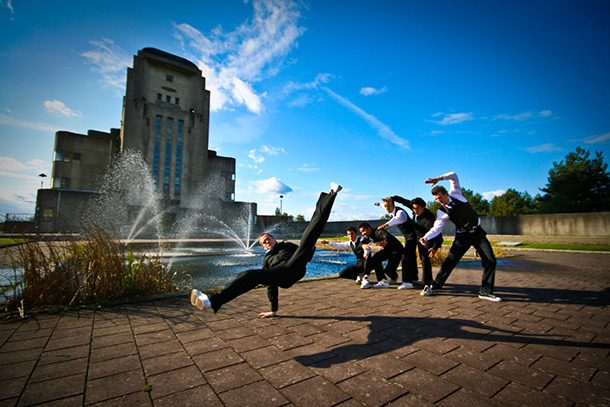
One-Handed Air Flare
If you’ve reached this point mastering crazy breakdance moves, there’s still one challenge ahead of you – the one-arm air flare. This move has gained popularity among many powermovers worldwide. When executed correctly, it can look very graceful. However, if done incorrectly, it can be quite dangerous.
One-Handed Chair Flare
This move is truly remarkable. Many of you might marvel at how this guy’s arm doesn’t simply give out. It takes immense shoulder strength to jump high enough, complete the full rotation, and land safely on the same arm. The bboy in this GIF is named ‘Bboy Kill,’ for obvious reasons.
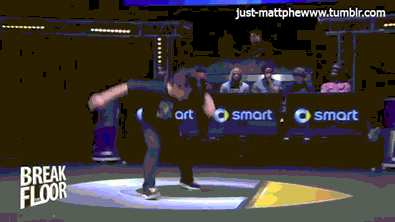
In conclusion, exploring the top 25 craziest breakdance moves has been an exhilarating journey through the world of Bboying. From gravity-defying spins to mind-bending freezes, these moves showcase the incredible athleticism, creativity, and dedication of breakdancers around the globe. Each move represents years of practice, pushing the boundaries of what the human body can achieve in dance.
Whether it’s mastering the iconic windmill, defying gravity with headspins, or innovating with new spins and transitions, these moves highlight the evolution of breakdancing as an art form. As we witness the skills of Bboys and Bgirls like Bboy Cico, Bboy Taisuke, and Bboy Uzee Rock, it’s clear that breakdance continues to captivate and inspire both performers and audiences alike.
As you delve deeper into the world of breakdancing, remember that behind every impressive move is a dancer’s passion, resilience, and commitment to the craft. Keep pushing boundaries, exploring new techniques, and celebrating the awe-inspiring artistry of breakdance. The journey to mastering these moves is challenging but incredibly rewarding, offering a unique expression of rhythm, strength, and style. So, put on your favorite beats, hit the dance floor, and let the spirit of breakdance propel you to new heights!

Leave a reply